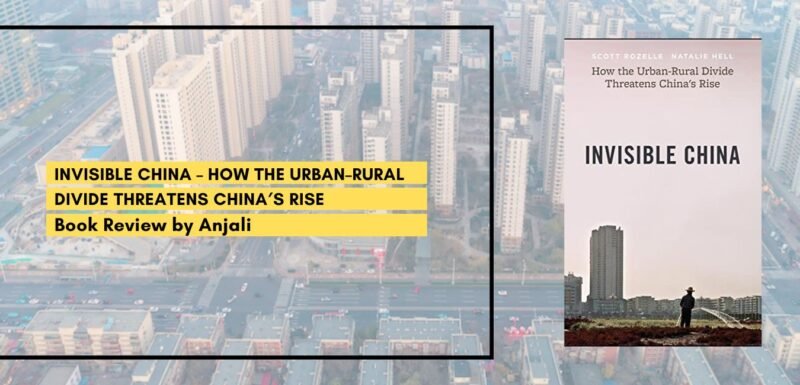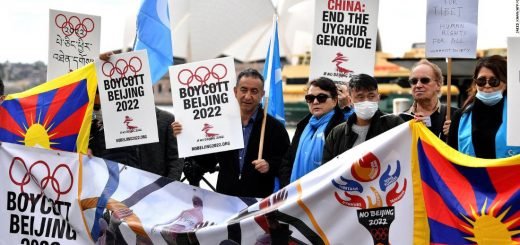[Book Review] Invisible China: How the Urban-Rural Divide Threatens China′s Rise

The book “Invisible China: How China’s Urban-Rural divide threatens China’s rise” authored by Scott Rozelle and Natalie Hell adopts a critical perspective on the sky-rocketing economy of China. There’s a caveat regarding the “inevitable superpower” signaling there are risks that the economic giant might falter. Why does the Stanford economist says this with such emphasis? It is because he points out an very significant pitfall in China, that is, middle-income trap. When a country from lower-income spectrum drives itself forward to reach the middle-income stage but remains stagnant and fails to attain the high-income status is when it is called to be embedded in middle-income trap. This is what China is facing. If we ponder over the per capita income of China, it is wishy-washy at 79th place, far behind the high-income countries. Rozelle uses the development analogy of Paul Collier who observed that development is like a game of Chutes and Ladder. If a country touches the ladder, it gets to the higher level on the board. On the other hand, if it lands on a chute, it recedes in the game and one has to recollect the path. For last many decades, China has been rising swiftly on the ladder. But that halcyon days seem to wither because since 2005 China’s wage rate has witnessed upward trend. Hence, companies bend towards the countries where they may find a lower wage rate so that their profit persists unabated. According to the author, from 1990 to 2005 China dominated the markets as the wages were low so it swarmed the companies around China. But with the rising wages, it is visible that countries like Vietnam are taking the benefit.
Scott also points out the difference between the countries which break through the middle income trap which he calls as “Graduates” and the “trapped” ones. The difference is that of human capital. The attributes which enable the people of the country to contribute to the economy are somehow lagging behind in China. Health and education are one of the important assets of human capital. Rozelle through his meticulous research finds out that “millions of children across invisible China have iron-deficiency anemia. Anemia is known for critically impeding the learning process. Another issue among rural children is that of poor vision which again affects learning. The lack of nutrition and oblivion of the parents is something which has aggravated this problem. They are not well informed that their children need help. This is the issue which is pervading in the developing and under-developed regions of the world. But then why middle-income countries are engulfed by these problems? Scott answers that it is because of income inequality. Though the country progresses on the economic graph and average incomes swells up but still there are many people left who are unable to access the basic necessities. If health is not prioritized, it has negative impact on the economy in the long run.These invisible health problems is one of the reasons that countries remain trapped in middle income.
Another important human capital is education which carries the major chunk of this book. Education in China has mainly become the privilege of urban Chinese. Students from China had highest score in PISA (Programme International Students Assessment) in 2012 and 2018 which is one of the toughest exams all over the world which evaluates students on the basis of their mental ability. It is commendable that in China since 2006, primary education until 9th grade has been made mandatory and free of cost. But, high school carries equal importance. And Xi Jinping, the present incumbent President of China, has made efforts to make schooling accessible to everyone. Nevertheless, the book outlines deeper issues plaguing Chinese education system. Rozelle emphasizes that inception of education in China has been slow. The education should have catered to entire labor force and not only the present generation. The underlying problem is that the older generation had not been able to avail the educational facilities.
Another major reason why China’s human capital is deteriorating is the jaw-dropping urban-rural gap. Now comes the concept of “Invisible China” put forth by Scott Rozelle, the senior fellow at Freeman Spogli Institute for International Studies. He refers to rural China as “Invisible China” because it is nowhere to be taken into account. All the talks of the “Factory of the world” revolves around urban Chinese even though the rural China consists of the majority of the population. Rural China is not only invisible to the rest of the world but also invisible to urban Chinese. Similarly, Dexter Roberts, the author of “The myth of Chinese Capitalism”, argued in his book that the central challenge that Chinese economy faces is that of urban-rural gap which is widening ever since late 20th century albeit government initiatives. And surprisingly, this gap is exacerbated by government’s policy. Under the hukou system, all citizens at the time of birth are given urban or rural identity. This determines the future of an individual. Rural students have to attend the rural schools, they are not allowed to be admitted in urban schools. If by hook or crook, they attempt to avail urban education, it carries along several structural hindrances. This seizes the opportunity from rural students to attain education at prestigious urban schools. This is the relative deprivation that children are facing. Therefore, China’s human capital crisis is entrenched in its countryside. But the ramifications are for theentire country. What we read on our crispy headlines or what flashes in the news channels that China’s education system is one of the best in the world and Chinese Students perform outstanding in STEM fields, is all about urban China. The rural China remains concealed from the landscape. What the author hints at is that 64% of the Chinese population is rural which accounts for more than half of the people. The periphery which is being sidelined today holds China’s future economy. There are other challenges as well that author highlights. One such challenge is school dropouts in rural areas. The reason being, China is a big manufacturing factory which throws up abundant jobs for unskilled population. To add on, with rising wages, jobs seem more appealing. But this has adverse repercussions. This is what drives a country to middle-income trap profusely. For the short term gain, a base for long term loss is being laid.
Furthermore, the author throws light on vocational education. The people who are unable to qualify the high school entrance exam, they can get admitted to vocational schools but it has its flaws too. There’s no regulatory body monitoring the functioning of these schools. The skills taught in the schools are not in the consonance with the required aptitudes for jobs to be handled. Rozelle and his team carried research to find out the progress of these schools. The results showed that the progress of most of the students was in limbo due to lack of proper facilities and apathy on the part of faculty.
Outlining the major issues crippling China, that is, hukou system as well as human capital crisis, Rozelle also puts forth a way forward for China. The solution includes a substantial investment in early child development which involves education and nutrition altogether. There is also need of strict surveillance of vocational schools and refining of curriculum aligning with the skill development.
The author has mainly focused on the role of rural population in the economy of China and has cautioned against ignoring its significance as it holds the majority share of China in terms of population. He himself is one of the co-directors of the Rural Education Action Program at Stanford University and his major research since more than last 40 years has been on the agricultural policies, income inequality, other economic issues of China. This explains his focus on urban-rural in this book. Though the book presents a holistic picture of shortcomings in the upliftment of rural China still there are nuances to this view. Scott and Natalie try to present the objective facts that show the present economic condition of China. However, it cannot be said that world’s second largest economic behemoth is headed for economic decline as China even after dilapidation from Covid-19 overcame with rise. It has huge contribution in world’s economy. According to World Bank, it has entered the upper-middle income basket. Recently, a new rural revitalization strategy has also been designed focusing on the structural reforms in the hinterland to minimize the urban-rural chasm. Nevertheless, the book brings light to an very important issue which is swept under the carpet and remains unspoken and unheard but needs to be brought to the fore and worked upon.



















